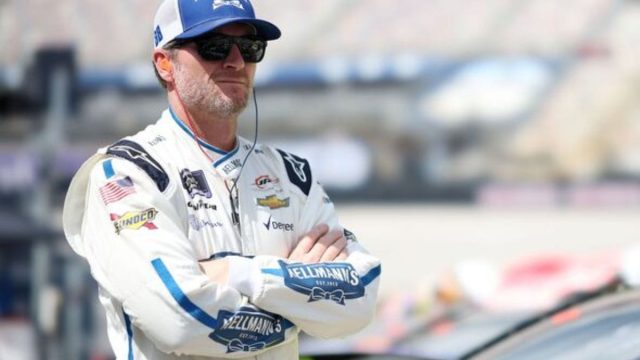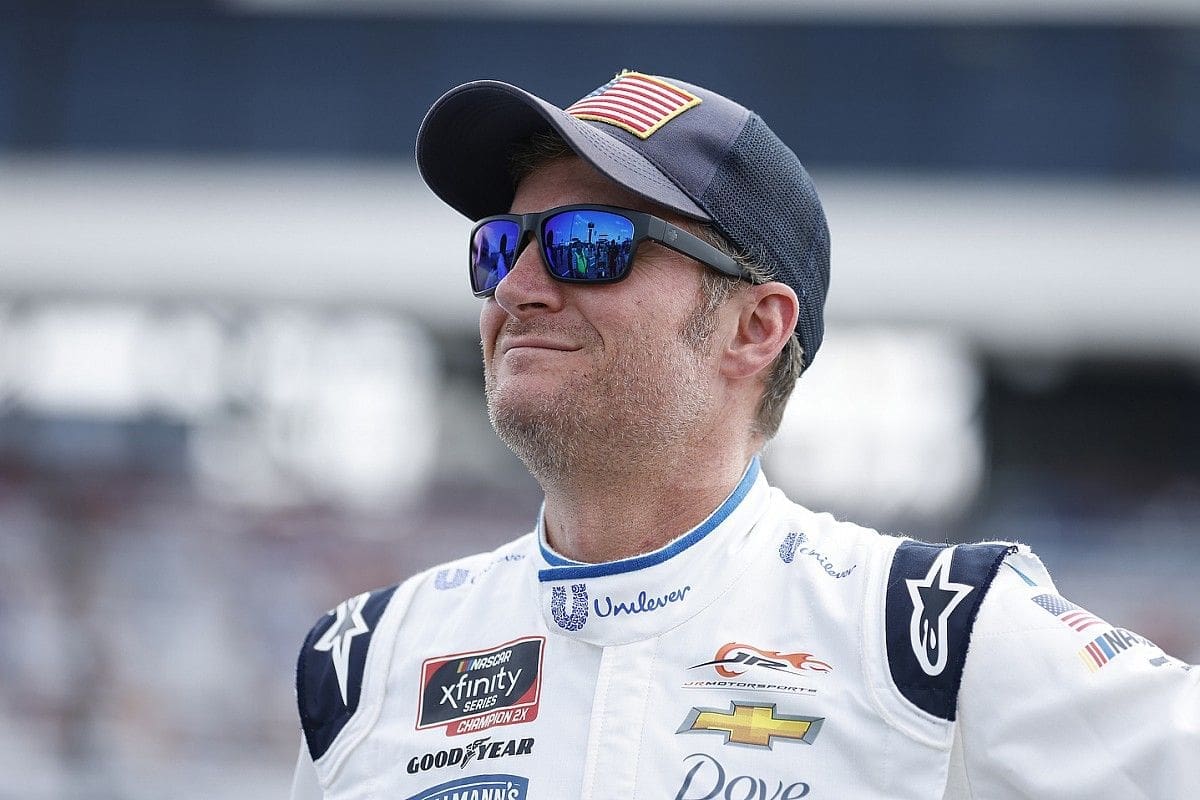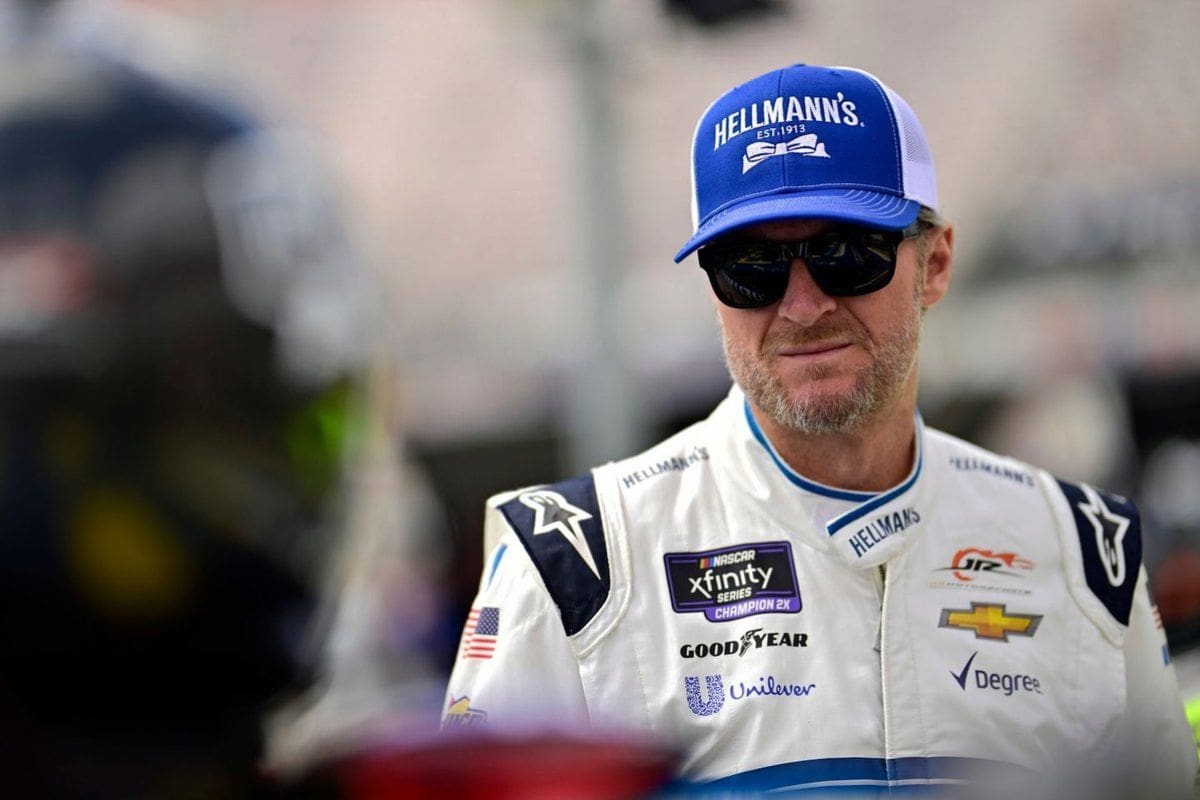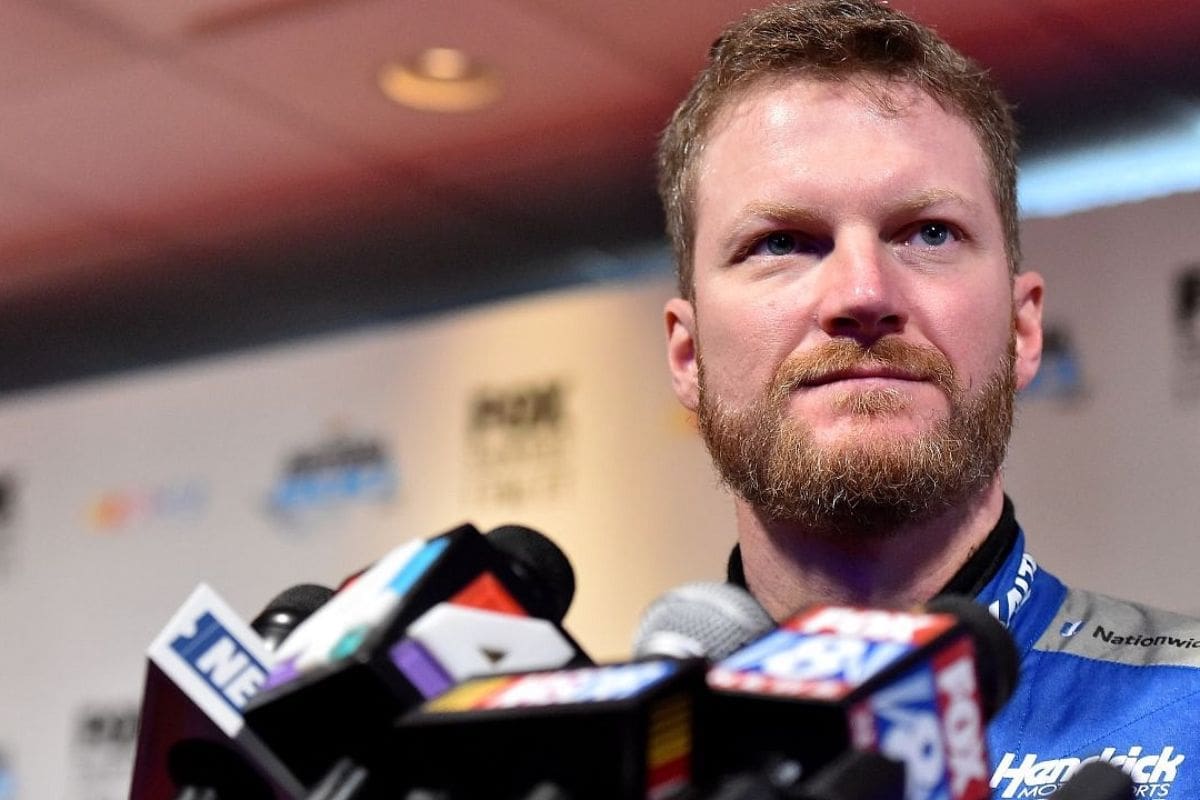Dale Jr Weighs in on NASCAR’s Latest Changes: Dale Earnhardt Jr., a respected figure in NASCAR, recently voiced his strong disapproval of the sport’s shift to concrete tracks, lamenting, ‘I hated that.’ His evaluation shows the technical and experiential drawbacks of this change, especially the varying grip levels, quicker tire wear, and diminished sensory input that concrete surfaces offer. Earnhardt Jr. reminisced about the unique racing characteristics and storied history of asphalt tracks at iconic locations like Bristol and Dover. This criticism prompts a deeper examination of NASCAR’s changing connection with track materials and the impacts for drivers and supporters equally.
Key Highlights
- Dale Earnhardt Jr. criticized the shift from asphalt to concrete tracks due to altered racing dynamics.
- He believes concrete surfaces diminish tactile feedback and complicate car setups.
- Earnhardt Jr. misses the unique challenge and competitive intensity provided by tarmac surfaces.
- He sees Andy Petree’s mid-season departure from RCR as a sign of deeper team issues.
- Earnhardt Jr. suggests RCR needs fresh perspectives and strategic hires to revitalize their performance.
Dale Earnhardt Jr’s Critique of Concrete Tracks
Despite the practical advantages of concrete tracks, Dale Earnhardt Jr. has consistently expressed his opposition to their adoption, citing both technical and sentimental reasons.
Earnhardt Jr. has articulated that the shift from asphalt to concrete fundamentally alters the dynamics of NASCAR racing. Technically, concrete surfaces present a distinct set of challenges for drivers and their teams. The main issue arises from the varying grip levels and tire wear characteristics that concrete introduces. Unlike asphalt, which offers a more consistent and predictable grip, concrete can be notoriously uneven and less forgiving. This unpredictability can complicate car setups and lead to increased tire degradation, making races more about endurance than skillful driving.
Furthermore, from a maintenance perspective, while concrete tracks are praised for their durability and reduced need for frequent repaving, Earnhardt Jr. argues that this convenience comes at a cost. The tactile feedback and the close connection between driver and track that asphalt provides are diminished on concrete surfaces. The subtleties in handling and the intricacies of vehicle control are less pronounced, which can water down the driving experience and, consequently, the spectator experience.
Earnhardt Jr.’s criticism reflects a deeper concern for the sport’s heritage. He believes that the essence of NASCAR racing, which was refined on the traditional asphalt surfaces, is being eroded. Concrete tracks, in his opinion, lack the character and historical significance that many classic asphalt tracks possess. This change not only affects the drivers but also the longtime fans who value the rich history of the sport.
Dale Jr’s Nostalgia for Asphalt at Bristol and Dover
Building on his critique of solid tracks, Dale Earnhardt Jr. often reminisces about the unique allure and competitive intensity that tarmac racing surfaces once brought to iconic tracks like Bristol and Dover. Historically, these tracks were known for their tarmac surfaces, which provided a distinctive and challenging racing experience. The dynamic nature of tarmac, with its ability to evolve over the course of a race, contributed significantly to the excitement and unpredictability of the competition.
During the 1980s and 90s, Bristol Motor Speedway underwent several repaves due to issues with excessive tire wear and the track becoming too bumpy. Despite multiple efforts to maintain the tarmac, the persistent problems led to the decision to repave the track with solid material in an attempt to provide a more durable racing surface. Similarly, Dover International Speedway followed suit, switching to solid material for comparable reasons. While these changes aimed to address practical concerns, they also fundamentally altered the character of the racing experience at these storied venues.
“Bristol when it was asphalt, it was magic. It seemed like something you would never be able to replicate. They went to concrete because they had a lot of problems with the track tearing apart. They did the same thing at Dover … I hated that they took those two racetracks that were super incredible, magical racetracks and put concrete down them. And they’ve never been the same ever since.” – dale jr
Dale Jr. laments these transformations, expressing that the switch to solid material detracted from the ‘magic’ that tarmac racing once brought to these tracks. He nostalgically recalls the era when Bristol’s tarmac surface created a unique and irreplaceable racing environment. Emphasizing his disappointment with the change. He believes that the intrinsic qualities of tarmac, which fostered a high degree of competitive intensity and unpredictability, have been lost, leaving a void in the fabric of NASCAR’s racing heritage.
“Concrete just isn’t as good, and look I can go to Nashville and I can go to Dover and I can go to Bristol, and I can see an amazing race there today. But I know where the potential is if they were asphalt, and I know how much we’re missing … I know how much better the races might be if they were asphalt and I hate that you guys and fans out there will never know that.” – dale jr
Dale Jr on Andy Petree’s Departure from RCR
Dale Earnhardt Jr. expressed his surprise and concern regarding Andy Petree’s unexpected departure from Richard Childress Racing, suggesting that the mid-season resignation indicated deeper issues within the organization. Petree, a seasoned NASCAR figure with a wealth of experience, had been an integral part of RCR. His sudden exit raised eyebrows and led to speculation about the underlying causes of such a drastic move.
Earnhardt Jr.’s comments reflected a broader sentiment within the NASCAR community. He noted that mid-season resignations are rare and often symptomatic of more profound organizational challenges. Such events can disrupt team dynamics and affect performance on the track, making Petree’s departure not just a personnel change but a potentially critical point for RCR.
“I don’t see Andy as the kind of guy that says, ‘Hey mid-season, I’m going to go do something different’. You know, so something went down, it’s kind of like that Almirola-Bubba Wallace thing. I don’t think we will all know the true details of it; it doesn’t feel good.” – dale jr
Earnhardt Jr. emphasized that Petree’s departure could be a sign of internal turmoil. He pointed out that such disruptions are often not isolated incidents but part of broader organizational dynamics. The timing, in particular, was perplexing, as it came at a point when teams are typically focused on fine-tuning their strategies for the latter part of the season.
Opportunity for Change at RCR
The departure of Andy Petree from Richard Childress Racing presents an essential opportunity for the organization to implement strategic changes and address underlying issues that have hindered their performance this season. With Petree’s unexpected retirement, RCR is at a critical moment where re-evaluation and restructuring could pave the way for future success.
The team has faced significant challenges in the 2024 season, with neither of their two drivers, Kyle Busch and Austin Dillon, managing to secure consistent results. This performance shortfall has left RCR struggling to make the playoffs, necessitating immediate and effective action.
Dale Earnhardt Jr. has highlighted the unexpected nature of Petree’s departure, suggesting that it signals deeper issues within the team.
- Driver Performance: Analyzing Kyle Busch’s and Austin Dillon’s struggles to identify specific improvements in driving strategy and vehicle setup.
- Team Dynamics: Reevaluating internal team dynamics and communication to foster a more cohesive and productive environment.
- Strategic Hiring: Bringing in new talent or promoting from within to fill Petree’s role with someone who can bring fresh perspectives and creative solutions.
Future Prospects for RCR
Given the strategic challenges and opportunities highlighted by Dale Earnhardt Jr., the future prospects for Richard Childress Racing hinge on their ability to introduce fresh perspectives and adapt in the face of recent setbacks. Earnhardt Jr. has emphasized the critical need for RCR to infuse new viewpoints and original strategies into their operations, suggesting that the team could benefit immensely from new leadership and ideas.
The departure of Andy Petree, who has a storied legacy within the organization, presents an ideal moment for RCR to readjust and make strategic hires that could revitalize their competitive edge. Dale Jr. pointed out that bringing in a visionary leader or creative thinkers could be game-changing for the team.
“Petree’s got a legacy, the dude has accomplished a ton in the sport, appreciate what you did for RCR. But here’s a chance to hit a home run and bring in somebody with new ideas … That could be crucial for the future of RCR going forward.” – dale jr
Moreover, the retention of their star driver, Kyle Busch, is paramount. Busch’s growing frustration due to consistently lackluster results could jeopardize team morale and performance. Hence, aligning their strategic direction to harness Busch’s talents effectively is vital. Implementing original approaches and ensuring that Busch feels supported and optimistic about the team’s trajectory will be crucial in maintaining his commitment.
News in Brief: Dale Jr’s Opinion on NASCAR’s Latest Changes
Dale Earnhardt Jr.’s critique of NASCAR’s shift to concrete tracks emphasizes significant concerns about grip variability, tire degradation, and reduced tactile feedback, which have altered the competitive landscape.
His nostalgic preference for asphalt surfaces at historic venues like Bristol and Dover highlights a yearning for the traditional racing dynamics these tracks provided.
This viewpoint initiates a discussion on the implications of surface material changes in NASCAR and the potential need for reconsideration to preserve competitive integrity and historical authenticity.
ALSO READ: Chase Elliott Honors Dale Earnhardt Jr. Legacy at Darlington



